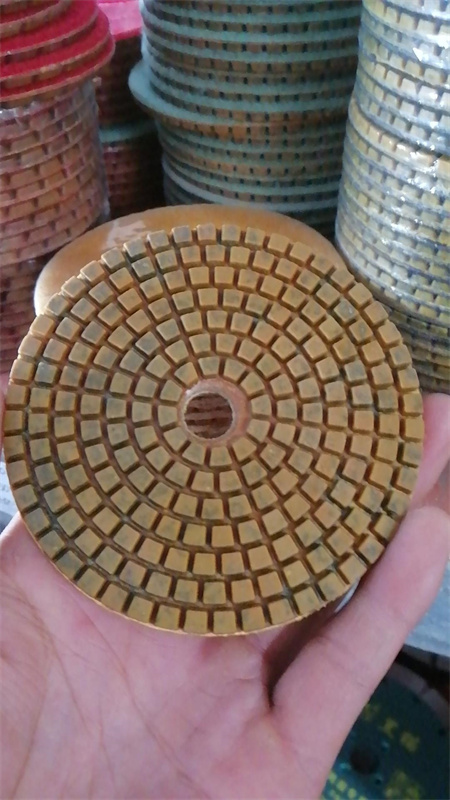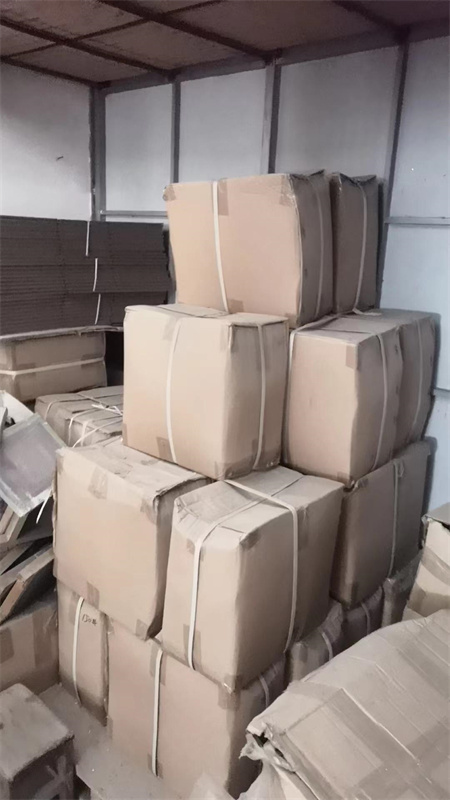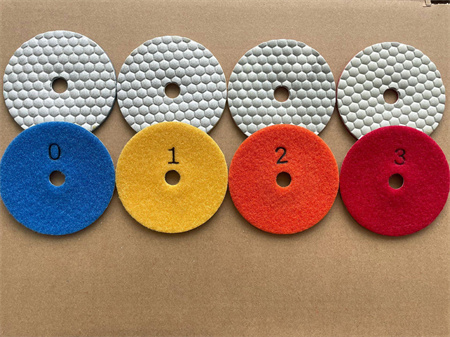Frequently Asked Questions About Diamond Polishing Pads
Diamond polishing pads are a must-have for anyone working with stone, concrete, or any other hard surfaces that need a smooth, glossy finish. Whether you’re a professional stone fabricator or a DIY enthusiast, these pads offer unmatched efficiency and results. However, the world of diamond polishing pads can be a bit overwhelming, with various types, grits, and uses to consider. If you’re new to the game or just looking for some clarification, here are answers to some of the most frequently asked questions about diamond polishing pads.
What Are Diamond Polishing Pads Made Of?
As the name suggests, diamond polishing pads are infused with industrial-grade diamonds. These diamonds are set within a resin matrix, which makes them incredibly durable and effective at grinding and polishing hard materials. The diamonds on the surface of the pad help to slowly remove layers of the material, gradually creating a smoother and more reflective finish. Depending on the quality and concentration of diamonds, the pads can last a long time while providing excellent performance.
How Do Diamond Polishing Pads Work?
Diamond pads work by using the abrasive action of the diamond particles to wear away at the surface of a material. As you move the pad across the surface, the diamonds scrape away microscopic layers, creating a smoother and more even surface. The grit of the pad determines how much material is removed; lower grit pads remove more material quickly, while higher grit pads polish the surface to a finer, glossy finish. This multi-stage process ensures that the surface becomes progressively smoother and shinier.

Diamond polishing pads are versatile tools that can be used on a wide range of surfaces, including granite, marble, concrete, terrazzo, and quartz. They’re also effective on surfaces like engineered stone and even glass in some cases. However, the key is choosing the right type of pad for the material you’re working with. While some pads are designed specifically for natural stone, others are better suited for harder materials like concrete. Always check the manufacturer’s guidelines to ensure you’re using the correct pad for the job.
What Grits Should I Use for Different Stages of Polishing?
The grit of a diamond polishing pad plays a crucial role in determining the end result. Generally, polishing involves using a range of grits in a gradual process:
1. Coarse Grit Pads (50-200 grit): These are used for initial grinding, removing scratches, rough spots, and imperfections. They’re perfect for leveling or reshaping the surface.
2. Medium Grit Pads (200-400 grit): After the coarse grit pads have done their job, medium grit pads refine the surface, reducing visible marks and smoothing things out.
3. Fine Grit Pads (800-1500 grit): These pads are used to start polishing the surface, preparing it for the final, mirror-like finish. At this stage, the surface begins to shine.
4. Polishing Pads (3000-8000 grit): These high-grit pads are used for achieving that flawless, glass-like finish. The higher the grit, the smoother and shinier the surface will become.
A well-rounded polishing job often involves using a combination of these different grits, with each stage bringing the surface closer to its final, glossy appearance.
Can I Use Diamond Polishing Pads on Wet Surfaces?
Yes, diamond polishing pads can be used wet or dry, but wet polishing is often preferred, especially when working with stone. Wet polishing helps to cool the pad and the surface, preventing overheating, which can damage both the pad and the material being worked on. Additionally, using water reduces the dust produced during polishing, making the process cleaner and more comfortable to work with.
How Long Do Diamond Polishing Pads Last?
The lifespan of diamond polishing pads depends on a few factors, including the quality of the pad, the material you’re polishing, and the intensity of use. A good-quality diamond pad can last for several months or even years if used properly. However, pads used on harder materials or under heavy workloads may wear out more quickly. Always check the pads for signs of wear, such as the loss of diamond particles or visible damage, and replace them when necessary.

Yes, diamond polishing pads come in several types, each suited for different tasks. Some of the most common include:
– Wet Pads: As mentioned earlier, wet pads are used with water to keep the surface cool and reduce dust. These are ideal for stone and marble polishing.
– Dry Pads: Dry pads can be used without water and are often preferred for smaller, more portable tasks or when water use is impractical.
– Turbo Pads: Turbo diamond pads are designed for heavy-duty grinding and polishing. They have a more aggressive design and are ideal for removing large amounts of material quickly.
– Hook and Loop Pads: These pads feature a hook-and-loop backing that makes them easy to change out and fit onto different polishing machines.
Can I Use Diamond Polishing Pads on Concrete?
Absolutely! Diamond polishing pads are commonly used for concrete polishing, whether for floors, countertops, or other surfaces. When polishing concrete, it’s important to start with a coarser grit pad to remove imperfections and gradually move to finer grits to achieve the desired shine. Concrete polishing is often a multi-step process, requiring patience and the right tools, but the results can be stunning with the right technique.
What Should I Look for When Buying Diamond Polishing Pads?

Diamond polishing pads are indispensable tools for anyone looking to achieve a high-quality, smooth, and glossy finish on hard surfaces. With the right tools and a bit of knowledge, you can transform rough surfaces into beautiful works of art. Whether you’re polishing stone, concrete, or even glass, diamond pads provide the precision and power needed to get the job done right.